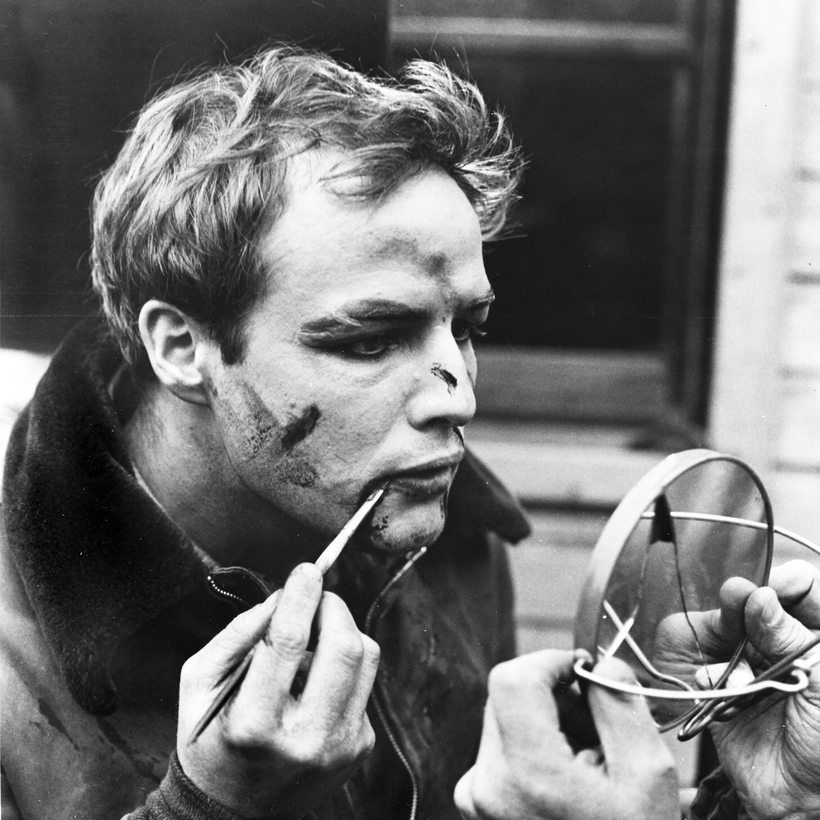Take it from a veteran of three nonfiction books in which I dramatized the betrayals, transactional romances, backstabbing, feuds, creative compromises, and artistic glories behind the creation of classic films: there are truisms one had better accept quickly. First, it’s a bloody miracle that anything gets made in Hollywood, let alone anything good. Second, no matter what actors, directors, and other creators say about why things happened the way they did, the real answer is: It’s always personal.
In my most recent deep dive into hidden Hollywood history, I submerged myself in the creation of the gritty exposé of ambition, corruption, and disillusionment with the American Dream that is On the Waterfront, now enjoying its 70th anniversary. Few Hollywood backstories are more emotionally charged.

Yes, director Elia Kazan’s landmark 1954 crime drama—dramatizing the moral awakening and personal redemption of a broken-down dockworker and ex-prizefighter standing up to widespread Mob-infested union corruption—swept the Academy Awards in many categories that matter most (best picture; best director; best actor, to Marlon Brando; best screenplay).
But two years before On the Waterfront rocked audiences, its critically lauded directing maestro became a lightning rod during the McCarthy-era Red-hunting trials, for naming eight filmmaking colleagues who had been his fellow Communist Party members 18 years previously. Then, having contributed to the destruction of their careers and livelihoods, he, along with a fellow House Un-American Activities Committee (HUAC) informant, the screenwriter Budd Schulberg, made On the Waterfront, a film that not only defends but sanctifies informants.
And here’s where things begin to get very personal. Kazan’s and Schulberg’s actions had devastating consequences. It also nearly lost them the services of Brando in the leading role.
Today, it is impossible to think of anyone but Brando in the signature role of Terry Malloy, the charismatic galoot and would-be boxing champion who utters the deathless line to the duplicitous elder brother who has set him up for assassination by union henchmen, “I could have been a contender.” But Brando detested Kazan’s caving to the opportunistic senator Joseph McCarthy and his cronies, whose political grandstanding hampered or crushed the careers of many writers, musicians, and performers, including Brando’s own actress sister, Jocelyn.

He returned the On the Waterfront script unread, and made certain that his agent told Kazan that he felt “conflicted” over his old friend and colleague’s cooperation with HUAC. In response, Kazan flew into a rage, saying of Brando he “didn’t want the son of a bitch in the film.” This marked a major falling-out between a star and Kazan, who six years earlier had helped birth Brando’s electrifying and libido-arousing Broadway breakout as Stanley Kowalski in Tennessee Williams’s A Streetcar Named Desire.
In correspondence with his shamelessly piratical producer Sam Spiegel and with screenwriter Schulberg, Kazan began blaming the outsize praise and adulation heaped on the post–Streetcar Named Desire Brando for making him lazy, spoiled, and no longer the “hungry and anxious” actor On the Waterfront required. “I’m not insane about Brando for this,” he wrote Schulberg, adding, “In fact, in my opinion he is quite wrong.”
Meanwhile, Kazan entertained his producer’s ideas of casting John Garfield, Montgomery Clift, or Frank Sinatra instead. But the studio money men kept pushing for Brando, who kept pushing back Kazan. Furious, Kazan (who said he believed “manly men” best represented America) played dirty by disparaging Brando’s masculinity. He tried to sell his backers on a young stage-and-TV actor named Paul Newman, admitting that Newman “probably will never be as good an actor” but he is “as good-looking as Brando, and his masculinity, which is strong, is also more actual. But he’s a darn good actor—plenty of power, plenty of insides, plenty of sex.”

Knowing Brando as intimately as Kazan did, he had to know the actor was unapologetically bisexual. In early 1950s America, when the government was promoting the dangerous and inflammatory anti-gay Lavender Scare alongside the Red Scare, Kazan’s tactic was reckless.
In the end, of course, Brando made the film (mostly because Kazan guaranteed he could quit work early for his sessions with a psychiatrist), stunned audiences with his revolutionary naturalistic Method-style acting, and delivered a haunting, lacerating performance that remains the gold standard among actors.
Making the film, he and Kazan were professional but aloof. They never worked together again, though Kazan tried.
In Hollywood, it’s always personal.
Stephen Rebello is a screenwriter and author

